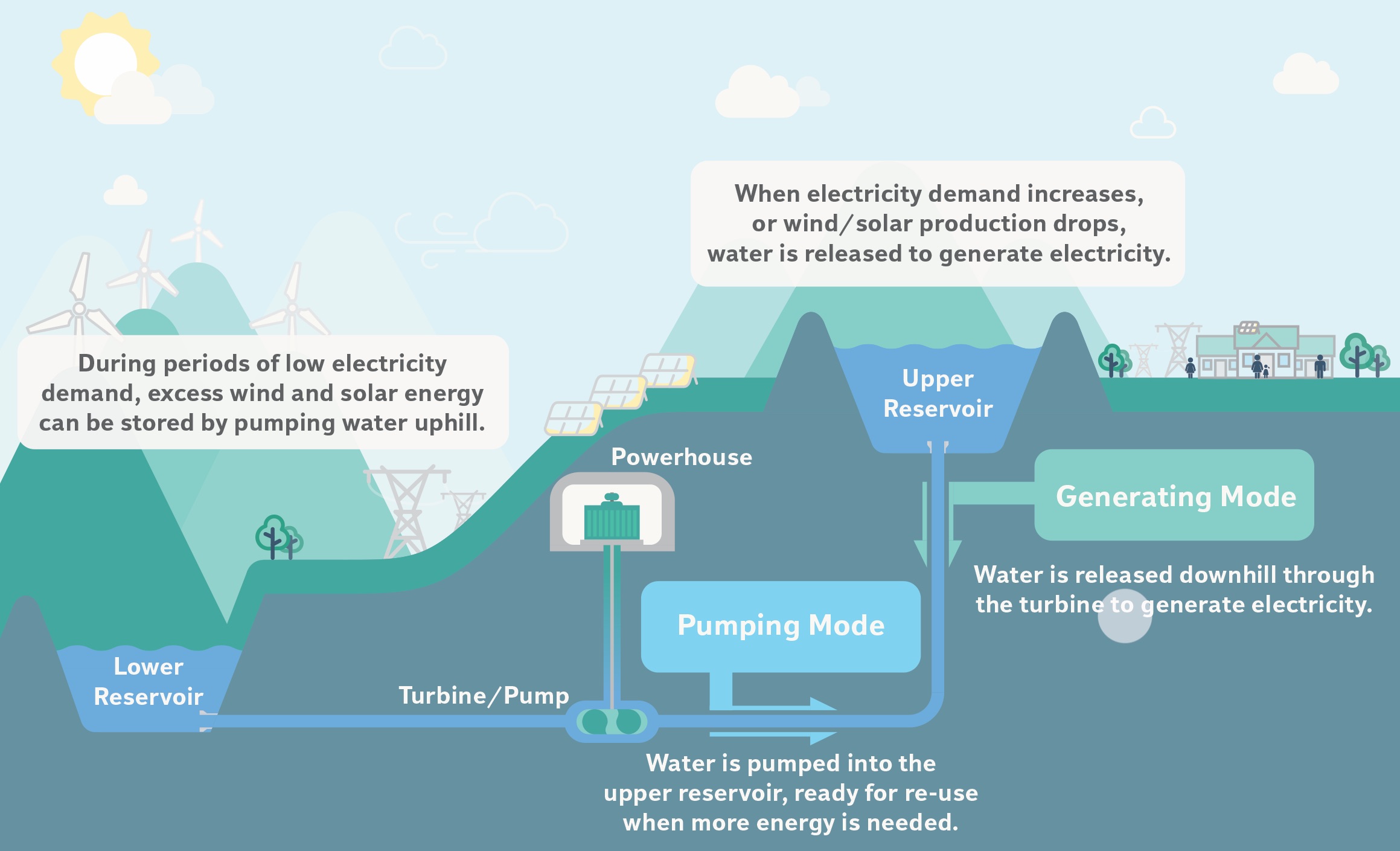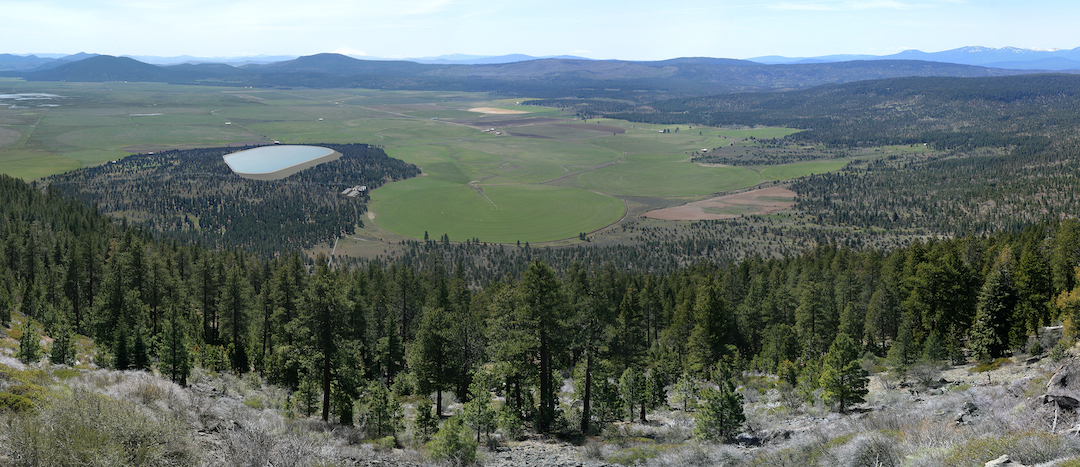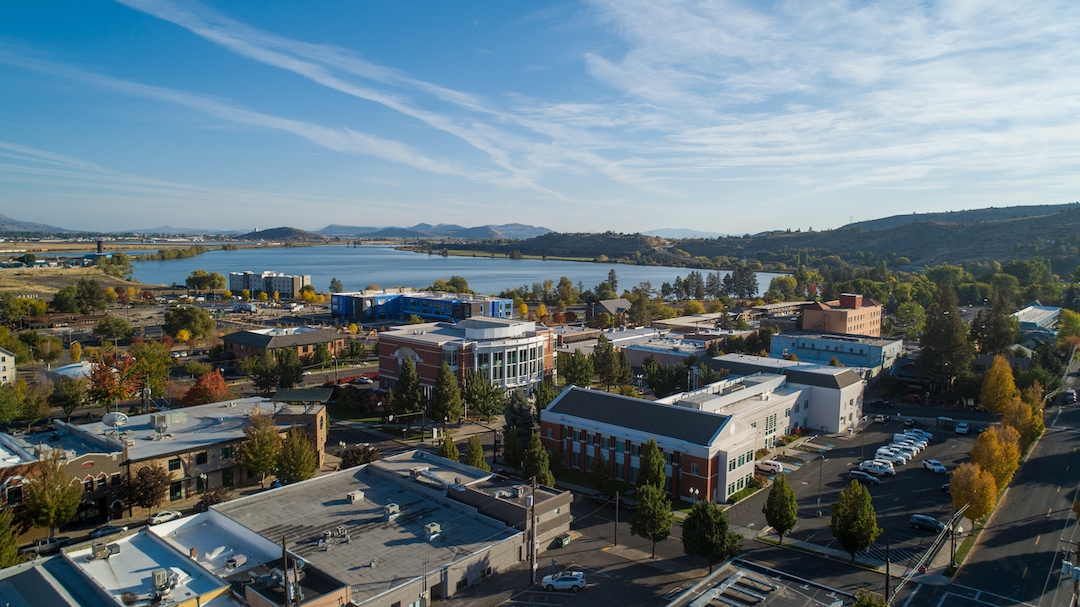Brand Story – A state-first project in Klamath County to help develop 100% clean-energy goals.
Klamath County’s economy is building upon its logging and agricultural roots and the Swan Lake Energy Storage Project is a cornerstone in the county’s efforts to become more progressive. Over the past 10 years, Klamath County Economic Development (KCEDA) and the community’s leaders have been paving the way for a large energy project. While construction isn’t set to be completed for about five years, when it is done, the Swan Lake Energy Storage Project will be the first new pump storage project in the United States in almost 30 years.
The electricity demand of large populations up and down the West Coast have led to policy changes in Washington, Oregon and California that call for 100% clean electricity goals. That means coal plants will be taken offline in coming years, and that energy will be replaced with renewable energy. Wind, water, and sun are great, clean sources of energy, but they are inconsistent. That leaves energy providers with gaps in their supply that can be mitigated by storing surplus energy for use when it is needed.
“Because of KCEDA, Swan Lake Energy Storage Project has been able to successfully get all of its state and local permits to begin construction of this project, that will be the cornerstone of Oregon’s carbon-free electrical grid. The grid needs to be reliable and it needs to provide electricity 24/7, not just when wind is blowing or the sun is shining,” says Erik Steimle, vice president of project development at Rye Development, the largest developer of new, low-impact hydropower in the United States and the developer of the Swan Lake project. “The best way to ensure a continuous, clean supply of energy is through storage.”

The Swan Lake storage project is located approximately 11 miles northeast of Klamath Falls. The technology it uses is called pumped storage, which is the oldest form of energy storage in use around the world. It works by pumping water uphill during times of low energy usage. When energy demand increases, the water is released to flow downhill and generates the electricity through its movement. A number of projects throughout the US use this form of energy storage, and it’s quite common in Europe and Asia, However, there has not been a new pump storage project in the US in almost 30 years — partly because the investment in wind, solar, and water energy sources took attention away from pumped storage. The process of getting approval for the Swan Lake project by the Federal Energy Regulatory Commission took about 10 years and included a full federal environmental impact study.
Once completed, Swan Lake will be able to generate just under 400 megawatts of energy and will be able to store energy for 8 to 9 hours.
“The project will be able to provide on demand 100 percent renewable electricity for that 8- to 9-hour period every day, at full output,” says Steimle.
With groundbreaking taking place later this year, the project will be operational in 2026. The impact to Klamath County is huge, and not just because of the electricity. The project will generate more than 3,000 jobs, and will increase the county’s tax revenues. Because of the lengthy construction time, the labor force can plan to stay or relocate to Klamath County and gain enough experience to transition from apprentices to journeymen. The project will also increase local demand for goods and services in Klamath County, which will help everyone economically.
Klamath County was chosen for the location because it has two of the primary substations in the state that connect the Pacific Northwest energy grid all the way from Canada to Southern California.
“The stored energy at this location will be available to utilities throughout the Pacific Northwest to provide on-demand, renewable, electricity to their rate payers,” says Steimle.
“KCEDA has an open door for individuals or companies looking to invest in southern Oregon and in Klamath County. They have the staff with the requisite experience to ask the right questions and facilitate the things that developers need to follow through on locally” says Steimle.
 Conceptualized reservoir at the Swan Lake project site in Klamath County, Oregon
Conceptualized reservoir at the Swan Lake project site in Klamath County, Oregon
Randy Cox, the CEO of the Klamath County Economic Development Association (KCEDA), says the community overall will benefit because the project will be able to draw talent from the two institutions of higher education in town: Oregon Institute of Technology, which is the No. 1 polytechnical school on the West Coast, and Klamath Community College, which Cox says is developing an apprenticeship program to increase skilled labor for this project and others like it.
“We’re seeing a lot of great economic development within the community right now, with increased interest in advanced manufacturing, diverse businesses, and more tourism,” says Cox. “This is an exciting time.”
Commissioner Kelly Minty Morris says Klamath County has been reinventing itself and this project is a cornerstone in that effort.
“This area is poised to be an energy hub, and we couldn’t be happier about having a project like this to really elevate what we are doing and put us on the map as a resilient community,” says Morris.
To learn more about the project visit www.ChooseKlamath.com or contact KCEDA at [email protected]
Brand stories are paid content articles that allow Oregon Business advertisers to share news about their organizations and engage with readers on business and public policy issues. The stories are produced in house by the Oregon Business marketing department. For more information, contact associate publisher Courtney Kutzman.


